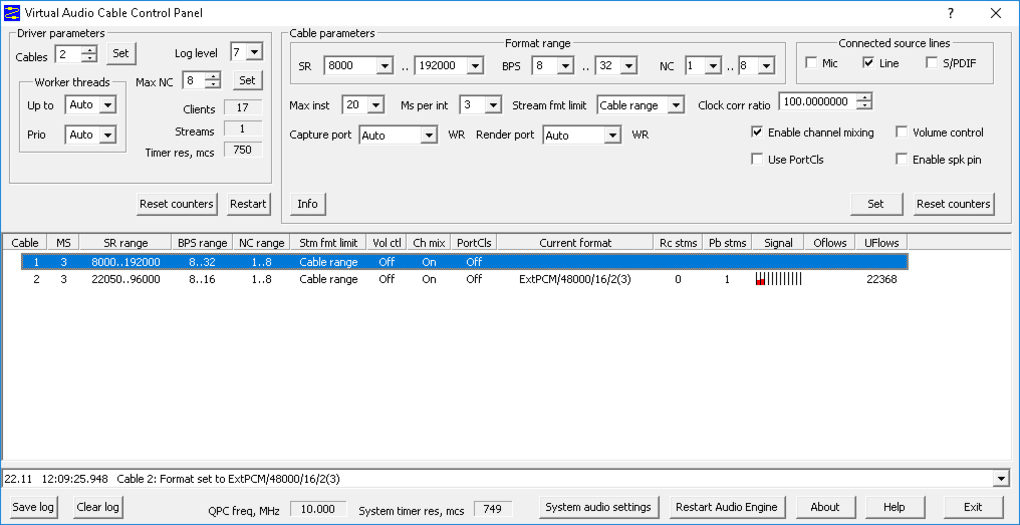

RME UCX loopback = ~12.5ms (using the RME driver) So what I measured is only the additionnal latency introduced by the audio loopback. So, I simply recorded a DX7 percussive sound “straight” out of the plugin and after the loopback, and mesured the relative delay. I wanted to report the additionnal latencies achieved when using the hardware loopback of my RME UCX with regard to the LoopBeAudio software for Windows. Regarding my evaluation of loopbeaudio, this is an older report: So I prefer to use the RME hardware loopback.

Transfer audio between application with no added equipment or special settings.I heard that it is in contrary very quick?!īut as it behaves as an audio interface, I needed to aggregate it with my RME audio interface and had to therefore use ASIO4ALL which introduces latency with regard to the RME audio drivers. I'd say anything over 4GB of ram is fine, other than that the program is solid. The most common ones being an annoying audio stutter or popping sound. Another thing you have to keep in mind when using Virtual Audio Cable is that your computer is way above the minimum requirements to prevent any sound quality issues. Basically, anything that doesn't allow custom audio input or output sources won't work with Virtual Audio Cable. Also, keep in mind all applications are not compatible with Virtual Audio Cable.


I'd suggest looking up user made tutorials on other websites to get the basics down. Add on to the fact there is no solid tutorial that comes with it either. This is mainly due to tot he fact it operates in such a weird way. Virtual Audio Cable does have a bit of a learning curve about it. That might sound and seem confusing at first but once you realize that it just the program working you'll be used to it. Whenever the users use the software a virtual cable actually shows up the applications you are using. Virtual Audio Cable has a unique windows integration that might catch users off guard. One-click easy installation and set up.Easy application to application audio transfer.Virtual Audio Cable eliminates all of that. Keep in mind if you wanted to do this kind of thing without the software you would need speakers, a microphone and other bits of equipment to keep the sound quality high. The most interesting aspect of the program is that it doesn't require any additional equipment like a microphone. The program is designed to seamlessly take sound coming from one application and turn it into audio input for another. Virtual Audio Cable is a fun and interesting bit of software.


 0 kommentar(er)
0 kommentar(er)
